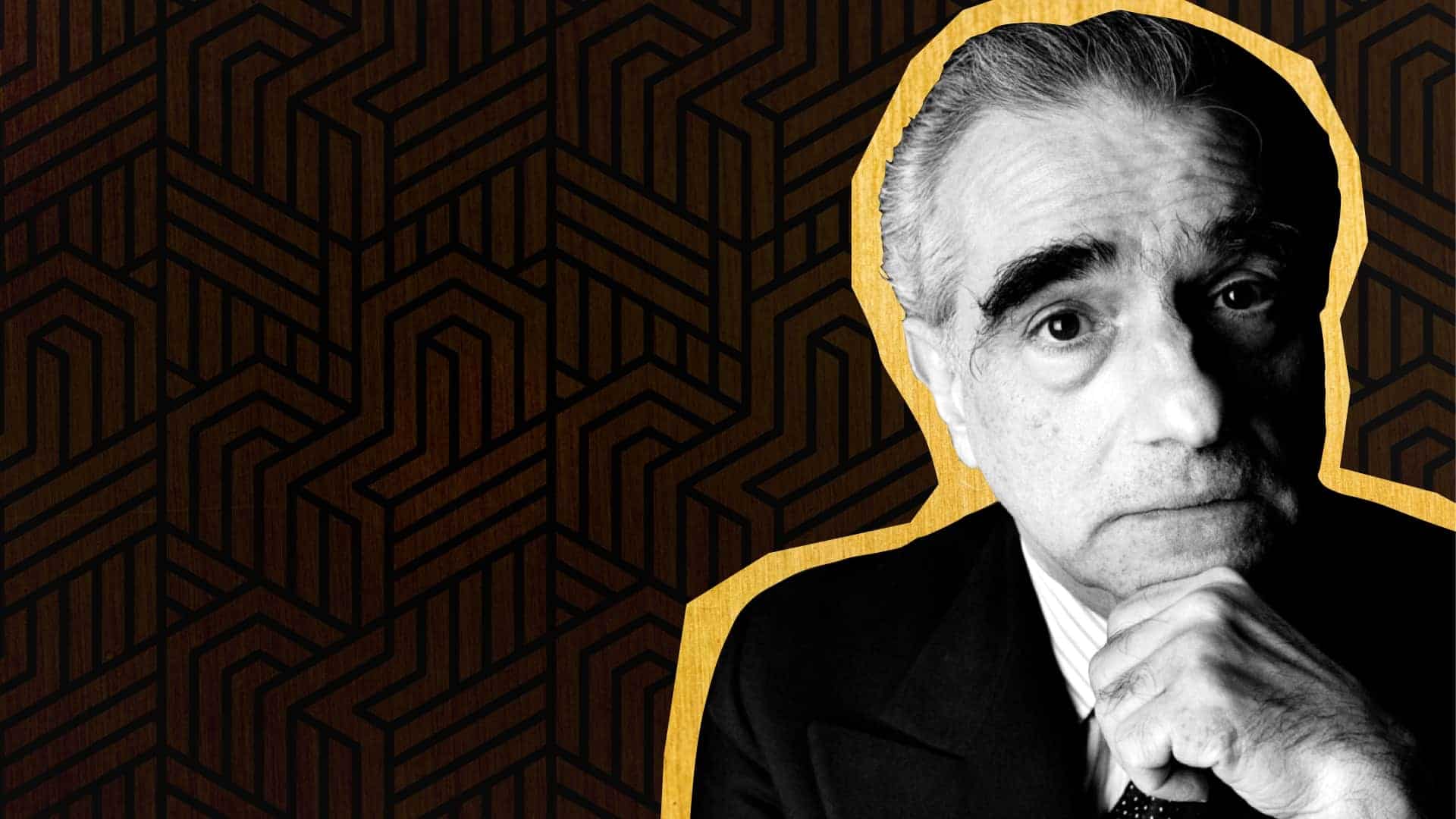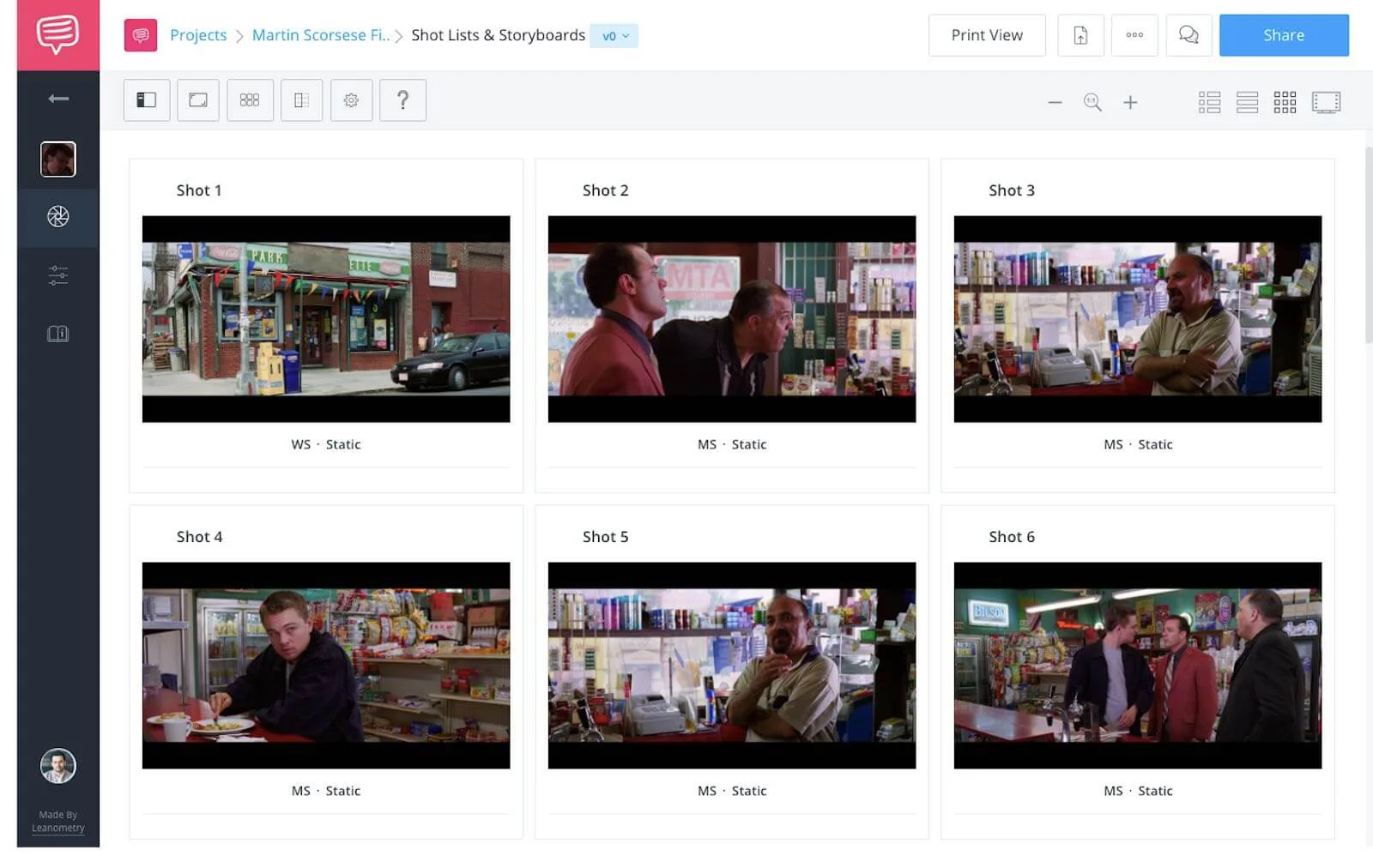How do you learn from a director like Martin Scorsese? You can watch his films, and you can learn by watching his interviews. We took the best Martin Scorsese quotes from his various interviews.
Then we compiled a video with examples from his films, so that way you can perfectly understand the directing tips he makes in each interview.
Martin Scorsese Interviews
1. Build flawed characters
Martin Scorsese finds that he’s attracted to characters that are not all good or all bad, but rather characters with deeply human flaws. Often, his films center around characters that try to maintain order within immoral worlds. If nothing else, these characters are entertaining.
Martin Scorsese quotes will often be about his attraction to these types of stories, and many Martin Scorsese directed movies are rather unconcerned with plot and focus most of the energy on character.
Martin Scorsese on the Importance of Visual Literacy
Part of the effect that comes from this is you connect with the characters much more than you might in films where the character is never seen as wrong or flawed. If your hero is constantly fighting a bad guy, you’ll assume every action they carry out is somehow justified.
This also connects to another device that has been attributed to Scorsese films which is the portrayal of violence. Martin Scorsese is very quick to qualify the violence in his films as being “unpleasant” and that the characters in his films who are violent often “reap what they sow.”
Martin Scorsese Quotes
2. Link camera movement to emotion
In the director’s commentary from Taxi Driver, Martin Scorsese talks about how he likes to shoot things the way he perceives them from real life. That means he walks around the world thinking of camera movement that would generate the same emotions he feels at that particular moment.
Scorsese talks about impression and perceptions, and how he’s always frustrated with how he can’t seem to get his camera moves to be as fast as he had hoped. You can see examples of this technique in Scorsese films. This is something stated in many Martin Scorsese quotes.
Martin Scorsese Scene by Scene
If something is particularly startling, Scorsese might use a very quick push-in to represent the emotions of the character. This doesn’t mean every camera move is solely based on emotion, because many can be both tied to emotion and to some practical decision, like a moving object.
For instance, if our main character chases a train that is carrying a loved one away, we might see the camera move away from the character to both represent the emotion and the fact that the train is physically moving. Both can be true at the same time, but motion creates emotion.
Auteur Theory Made Practical
Explore directing techniques used by the greats
Create works like these iconic auteur directors. Explore practical directing tips you can immediately put into action on your next project
EXPLORE Auteur Directors
Scorsese Film School
3. Energetic editing decisions
Many filmmakers will point out how Martin Scorsese movies have very informal and energetic cuts. It is almost akin to someone who takes the various loose items in their house to build a sophisticated sculpture. Everything is informed by the tone and story, but the images are sequenced to push the viewer rather than finesse.
Thelma Schoonmaker on working with Scorsese • Subscribe on YouTube
Martin Scorsese quotes as well as anecdotes from his film editor and long time collaborator, Thelma Schoonmaker, touch on this unique style. Old Hollywood editing was based around invisible cuts, but Scorsese movies have jarring and apparent cuts, but they create energy. Martin Scorsese know how he wants you to feel, and he is a “dirty fighter” of cinema who will pull out all the tricks to get you feeling that way.
The difference between him and say, Michael Bay, is that Scorsese’s stories, messages, and general approach is much more mature. Both are great filmmakers and if you watch Pain and Gain you’ll see some similar qualities to Scorsese films with cuts, direction, and narration.Martin Scorsese Camera Techniques
4. Character-driven camera placement
In many Martin Scorsese interviews he talks about “visual literacy.” Scorsese believes that camera placement should more often than not be tied to character. Most of Scorsese’s best films are intense character studies, so it makes sense to try and build their emotions into the film.
An Interview with Martin Scorsese
Scorsese knows that perspective is part of it, but if you were simply trying to show the character’s perspective you would default to POV shots, but Martin Scorsese quotes focus on the importance of showing a character’s emotions through framing. Scorsese knows that it is much more complex and requires the use of visual literacy.
The Departed Shot List • Shot Listed in StudioBinder
He also finds it important to immerse the viewer into the culture of the character, which means showing the environment, showing the character within a situation, showing the character in their element. Scorsese believes the intention of the artist is all in the framing.
Auteur Theory Made Practical
Explore directing techniques used by the greats
Create works like these iconic auteur directors. Explore practical directing tips you can immediately put into action on your next project
EXPLORE Auteur Directors
Martin Scorsese Directed Movies
5. Authentic and educational worlds
Martin Scorsese knows that authentic worlds are often educational to those who have not yet been acquainted. Scorsese makes movies about worlds, sometimes the same worlds in different time periods. Scorsese often shows you daily routines or little sections of that particular world to give you the full view of that world.
Casino Audio Commentary
As we mentioned before, Martin Scorsese will place his camera in places that not only convey character, but also the world they live in. This isn’t limited to the camera placement, but also all of the other departments that are used to create a full film.
Scorsese works with his costume designer, art department, make-up department and other to show these worlds in their entirety. He often knows these worlds better than anyone on set, so while it falls to him to make the decisions he also happens to be the most informed.
Here's our breakdown for the opening shot of The Irishman. Watch how Scorsese slowly (and literally) brings us into Frank Sheeran's world.
Irishman Opening Breakdown • Subscribe on YouTube
Understanding a character is one thing but its only when you provide an authentic and fully-realized world around those characters does masterful storytelling like Scorsese's come through.
Martin Scorsese Music
6. The composed movie
Martin Scorsese believes in something called “the composed movie.” He says he learned this from the great musical directors while growing up, because he found that their camera work was directly tied to the music.
Martin Scorsese on filmmaking philosophy
Scorsese found that it made the camera work more energetic and tied each shot together in the same way music notes can carry feelings and emotions across to the next. It helps when you have an idea of which music you’ll hopefully use in the final edit.
It’s no secret that many Scorsese films use similar styles of music, but that’s because he loves those songs. If you love a different style of music, but still want to build movies like Scorsese you will need to find a way to tie those beats and rhythm to the shots and the blocking.
Auteur Theory Made Practical
Learn the directing techniques used by the greats
Create works like these iconic auteur directors. Explore practical directing tips you can immediately put into action on your next project
Explore More Auteur Directors
Martin Scorsese Narration Montage
7. Montage paired with voiceover
One of Martin Scorsese’s favorite techniques is to show a montage accompanied by voice over. These montages are often theatrically staged slices of a larger sequence, rather than a collection of separate images strung together to create a feeling. Montage is one of the most cinematic techniques you can use, but Scorsese attaches narration as well.
Martin Scorsese Gangs of New York Audio Commentary
Scorsese uses that narration to paint in the blank spots that the shots might not be able to visually explain. Narration can often become redundant, but when you’re explaining an unknown world to a viewer you can use narration to express internal feelings, to explain the backstory of a concept or event, or add a bit of humor as well.
Martin Scorsese Sound Design
8. Extreme sound design
As we mentioned before, Martin Scorsese is a “dirty fighter” of cinema. He will use whatever means necessary to get your attention, to create a feeling, to say something extraordinary with his imagery. A big part of this is understanding the medium of cinema.
Sight and sound is the true name of the game when it comes to movies, and often filmmakers are so obsessed with the visuals that they forget how audio can be more than 50% of a movie.
Raging Bull Sound Design
Martin Scorsese and his team will often use extreme sound design to hammer home a point. That can mean tons of rapid sounds mixed and mashed together, or it can mean no sound at all.
The sound design is often abstract, used to represent a concept rather than a perfect recreation of the real situation. Think about most sound effects in films, and sound design in general. Do punches really sound like that when they hit someone, or are they exaggerated for effect?
Scorsese and his team take it a step further. They not only support on screen visuals with exaggerated sound design, but they often use completely unrelated sound design to introduce new emotions.
Up Next
Martin Scorsese’s Filmmaking Style
Now that you have a better idea of Martin Scorsese’s cinematic values, why not read up on even more of his filmmaking techniques. Check out Martin Scorsese’s Filmmaking Style to see our analysis on how Scorsese goes about planning, shooting, and cutting his films.
Up Next: Martin Scorsese’s Filmmaking Style →
Showcase your vision with elegant shot lists and storyboards.
Create robust and customizable shot lists. Upload images to make storyboards and slideshows.

